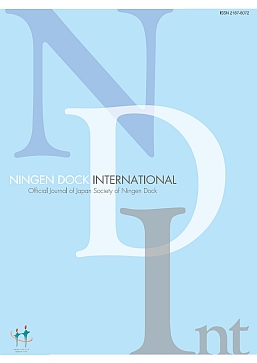Volume 6, Issue 1
Displaying 1-10 of 10 articles from this issue
- |<
- <
- 1
- >
- >|
Original Article
-
2019 Volume 6 Issue 1 Pages 3-8
Published: 2019
Released on J-STAGE: June 27, 2019
Download PDF (744K) -
2019 Volume 6 Issue 1 Pages 9-17
Published: 2019
Released on J-STAGE: June 27, 2019
Download PDF (937K) -
2019 Volume 6 Issue 1 Pages 18-23
Published: 2019
Released on J-STAGE: June 27, 2019
Download PDF (500K) -
2019 Volume 6 Issue 1 Pages 24-28
Published: 2019
Released on J-STAGE: June 27, 2019
Download PDF (494K) -
2019 Volume 6 Issue 1 Pages 29-36
Published: 2019
Released on J-STAGE: June 27, 2019
Download PDF (516K) -
2019 Volume 6 Issue 1 Pages 37-43
Published: 2019
Released on J-STAGE: June 27, 2019
Download PDF (704K) -
2019 Volume 6 Issue 1 Pages 44-49
Published: 2019
Released on J-STAGE: June 27, 2019
Download PDF (501K) -
2019 Volume 6 Issue 1 Pages 50-55
Published: 2019
Released on J-STAGE: June 27, 2019
Download PDF (611K) -
2019 Volume 6 Issue 1 Pages 56-61
Published: 2019
Released on J-STAGE: June 27, 2019
Download PDF (711K) -
2019 Volume 6 Issue 1 Pages 62-68
Published: 2019
Released on J-STAGE: June 27, 2019
Download PDF (747K)
- |<
- <
- 1
- >
- >|
